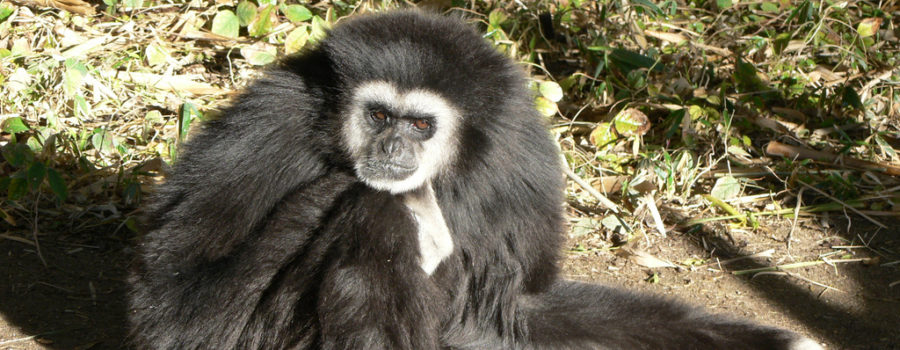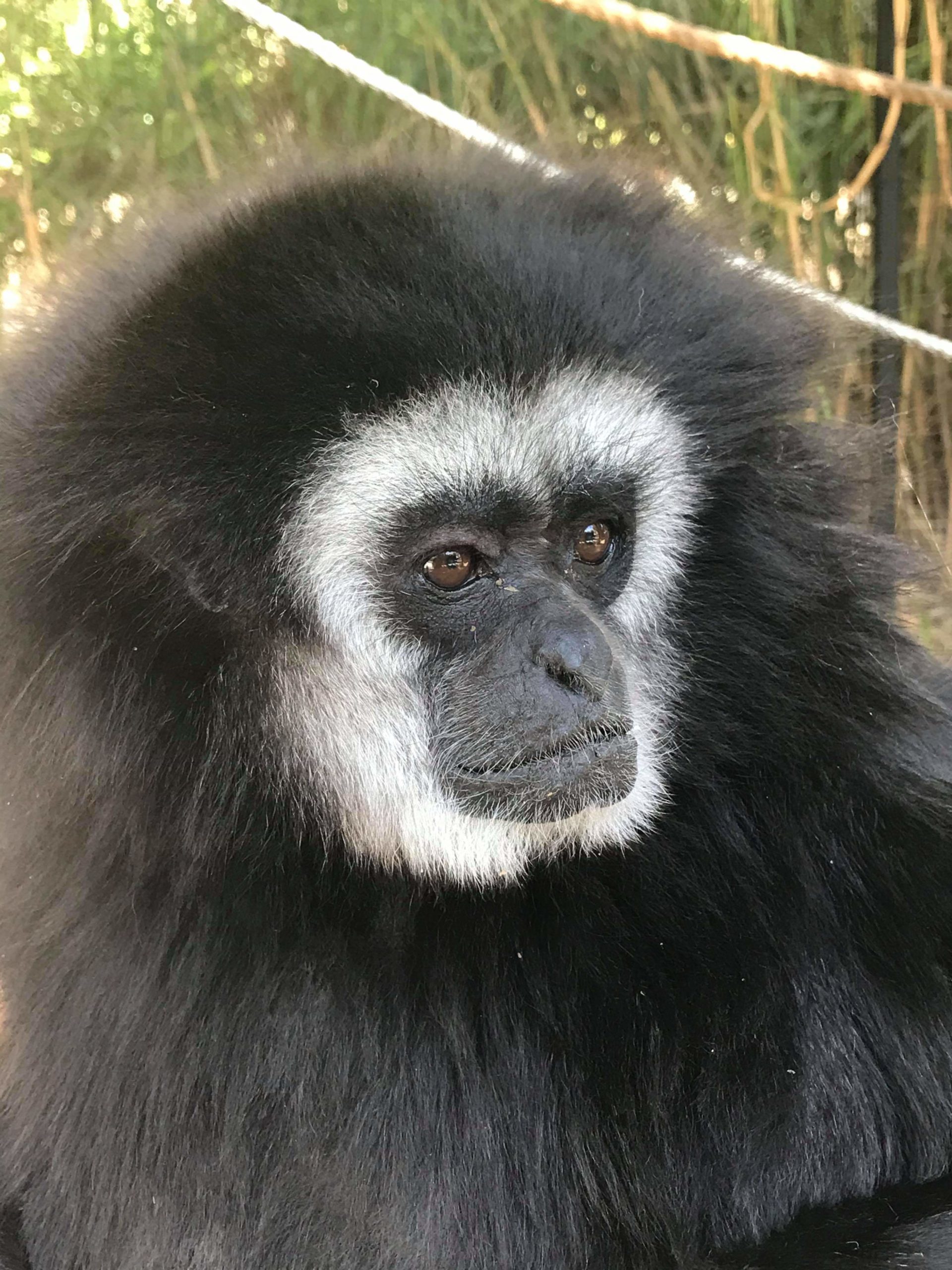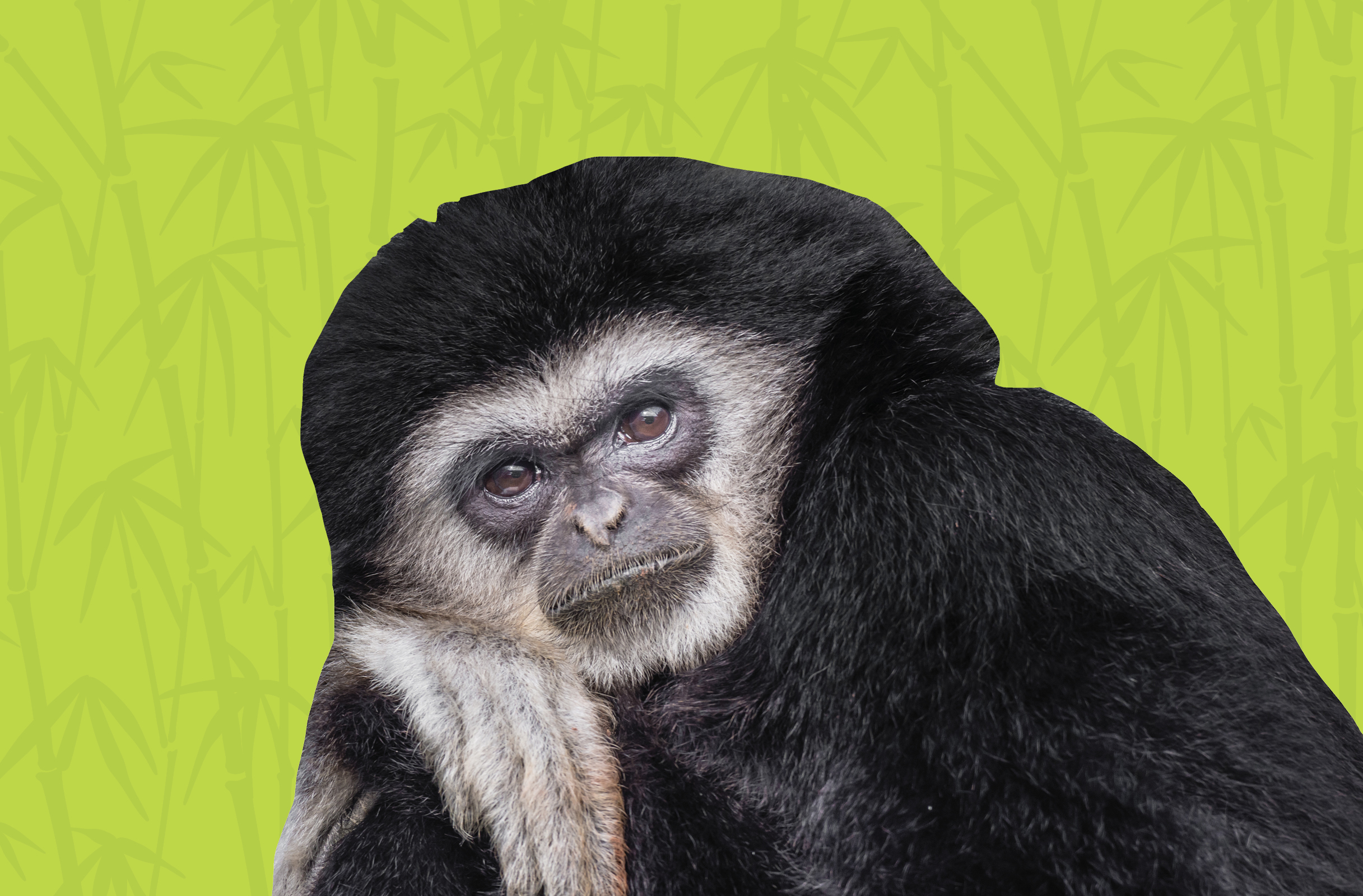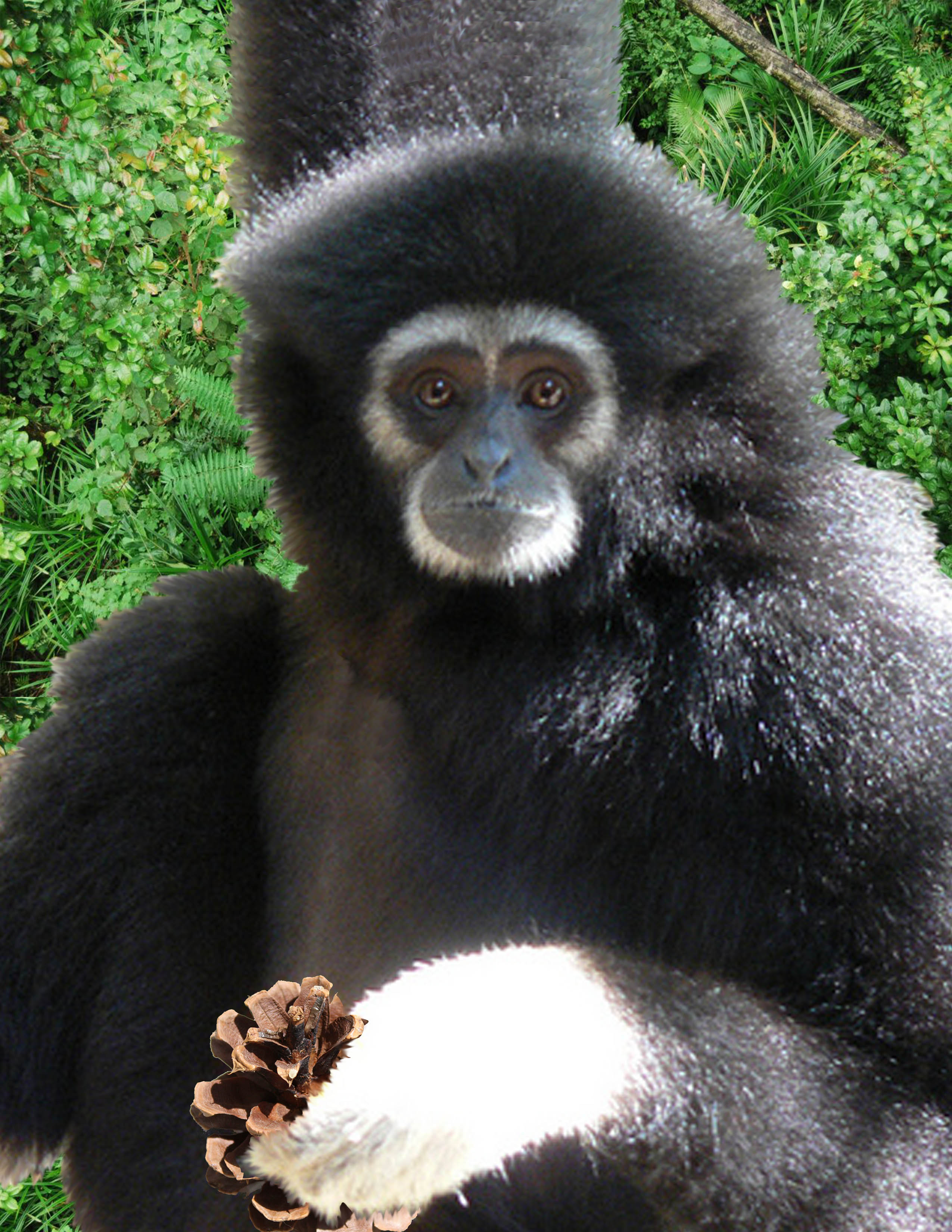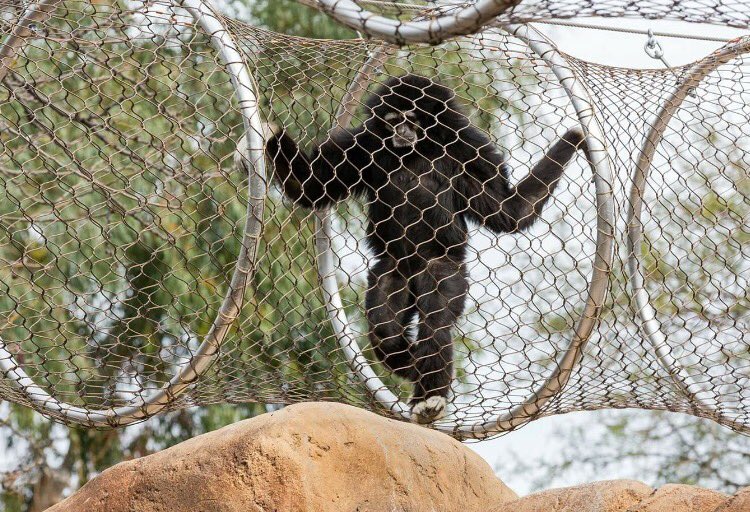Lar gibbons are classified as a lesser ape because they are smaller than other apes. You can tell that lar gibbons are apes and not monkeys because they do not have tails. These gibbons can range in color, usually from a light brown or cream to dark brown or black, with white hands, a dark face, and white fur ringing the dark part of their face. They have arms that are much longer than their legs, allowing them to brachiate or swing through the trees with ease, using their opposable thumbs to grab onto the branches.
Diet: Lar gibbons–similar to other primates–have a largely frugivorous (fruit) diet that consists primarily of figs. These gibbons will also consume leaves, young shoots, flowers, and the occasional insect.
In the Wild : Many fruit species in these forest areas are dependent on lar gibbons as a means of seed dispersal. Gibbons swallow the seeds in the fruits they eat and then disperse them when they defecate. Lar gibbons live in groups, but the size of these groups varies depending on altitude. Research suggests that there is a correlation between higher elevation, increased group size, and increased birth rates.
Conservation issues/actions: Gibbon species, such as the Lar gibbon, are declining in population due to habitat loss from logging and agriculture, as well as the hunting of adults to obtain offspring for the illegal pet trade. Taking a stand in advocating against illegal pet trade is a good way to support all gibbon species. Not only do the gibbon species include the most endangered ape species, they also include the most endangered species of primates in the world. Products such as glass and aluminum originate from elements in rainforest soil, and many of the paper products we buy in the U.S. come from Indonesian paper-plantations. Therefore, your efforts to live sustainably, and to reuse, reduce, recycle, and refuse helps preserve wild gibbon habitat.
At the Zoo:
You won’t have to listen too closely for the gibbon’s morning call; gibbons make loud whooping calls that can be heard all the way around the Zoo. Gibbons at the Reid Park Zoo have reproduced successfully, producing several offspring over the past decade that are part of the Species Survival Plan for Lar gibbons.

